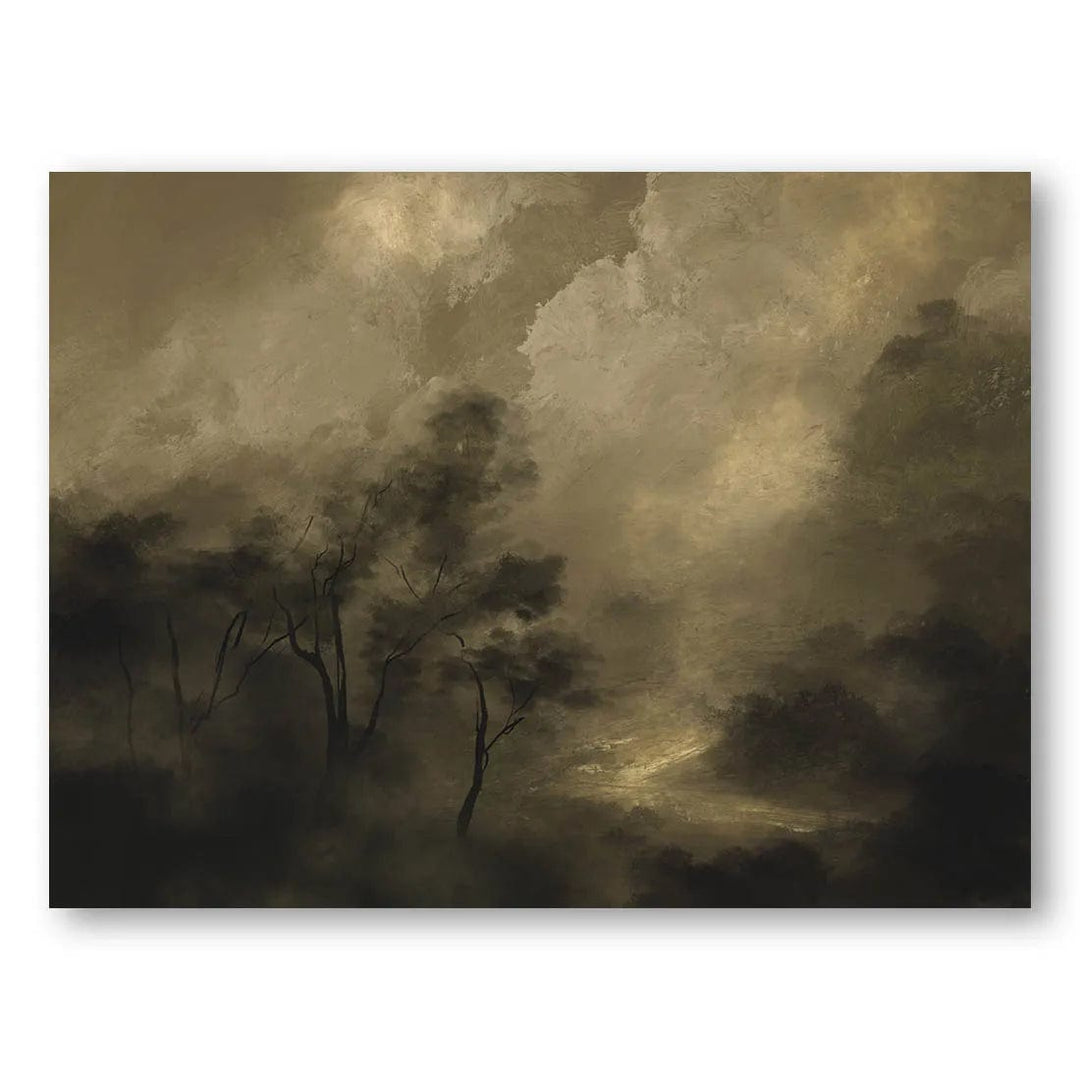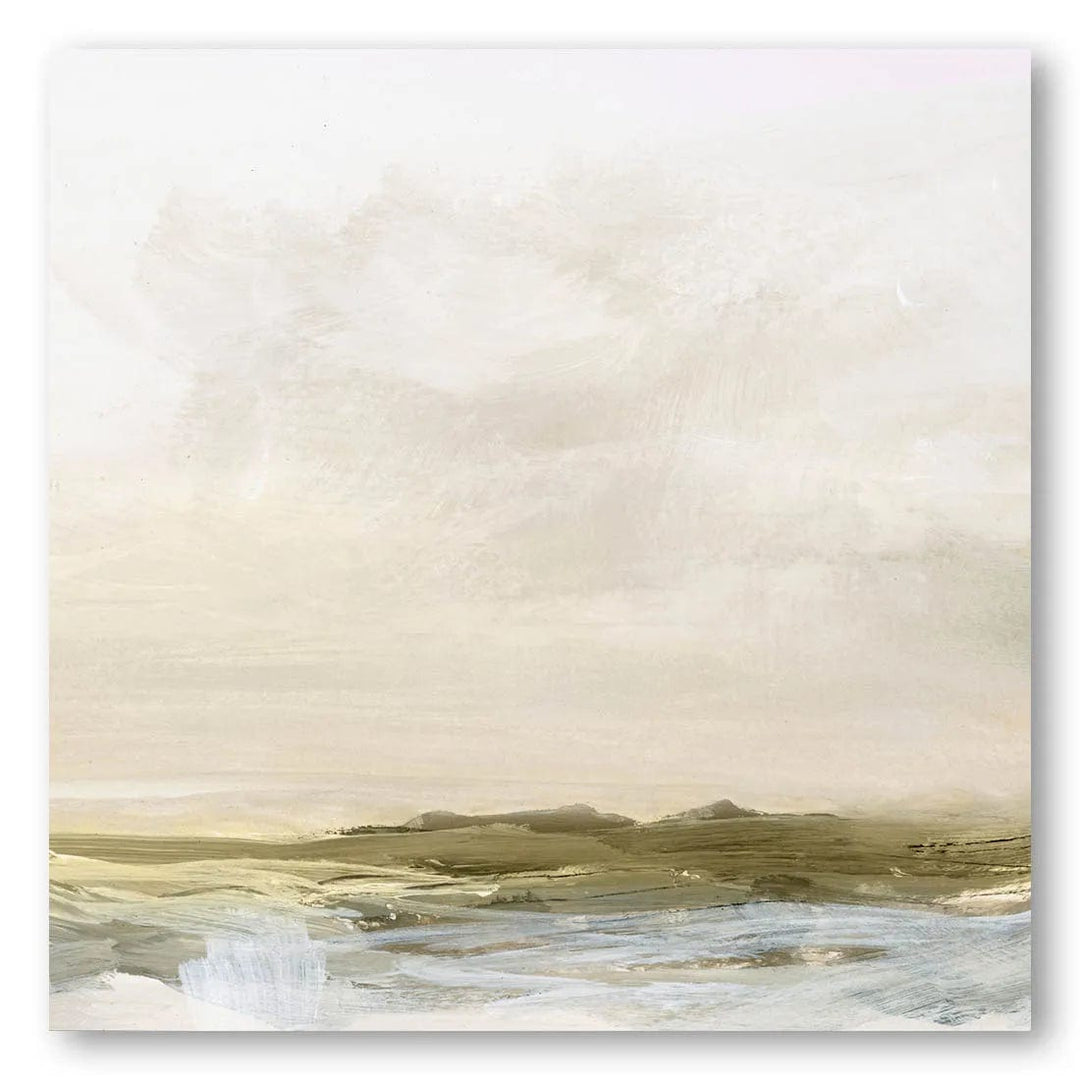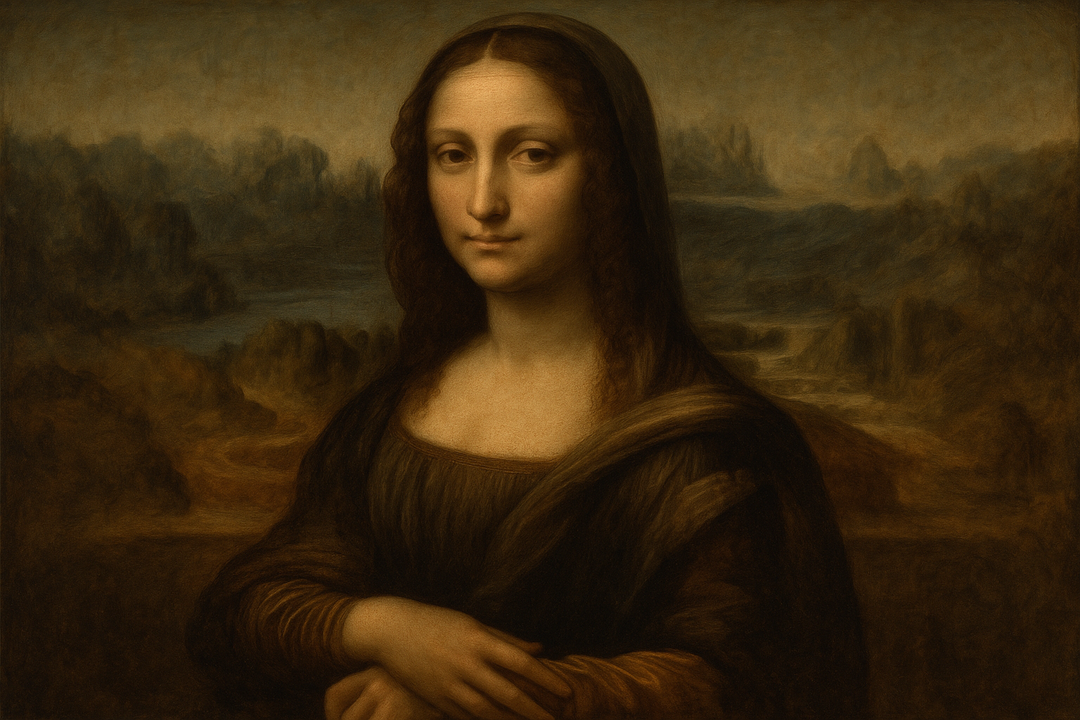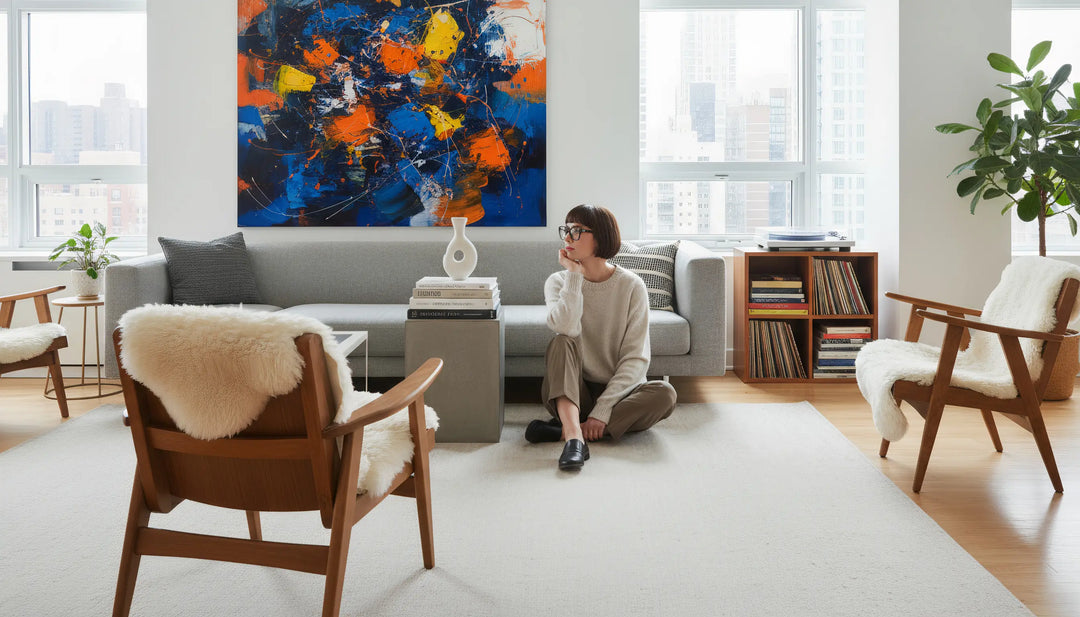Key Takeaways
- Proper framing transforms artwork from simple prints into professional displays
- Frame material, matting, and glazing choices affect both aesthetics and preservation
- Museum-grade materials ensure long-term protection from UV damage and acid deterioration
- Proper hanging techniques prevent damage and ensure secure, level display
- Regular maintenance preserves both the artwork and frame investment
Purpose Note: This guide aims to help you make informed framing decisions for optimal preservation and presentation. For professional framing services, custom materials, or complex conservation needs, consider consulting our framing specialists or conservation professionals.

The transformative power of professional framing: from simple print to statement piece
Why Proper Framing Matters
Framing large art prints serves dual purposes: protection and presentation. Beyond the obvious aesthetic enhancement, quality framing provides crucial protection against environmental factors that can damage artwork over time. Proper framing creates a microenvironment that shields prints from UV radiation, moisture fluctuations, dust, and physical contact.
Professional framing transforms a simple print into a substantial piece of art that commands attention and respect. The investment in quality materials and techniques ensures your artwork maintains its beauty and value for decades, making it a worthwhile consideration for any significant piece.
Choosing Frame Materials
The frame material you select impacts both the aesthetic appeal and longevity of your display. Each material offers distinct advantages and considerations for large prints.

Frame material comparison: traditional wood versus contemporary metal options
Museum-Grade Conservation Considerations
Museum-grade conservation framing uses specific materials and techniques to ensure long-term preservation. Key elements include acid-free mat boards, UV-filtering glazing, and archival mounting methods that allow for future removal without damage to the artwork.
- Acid-free materials: Prevent chemical deterioration over time
- UV-filtered glazing: Blocks harmful ultraviolet radiation
- Reversible mounting: Allows future conservation without damage
Window Mount Options & Benefits
A window mount (AKA matting) serves both protective and aesthetic functions. It creates a buffer zone between the artwork and glazing, preventing direct contact that could cause sticking or damage. Aesthetically, matting provides visual breathing space and can enhance the artwork's presentation significantly.

Matting comparison: The dramatic difference proper matting makes in presentation
Single vs. Double Matting
Single matting provides clean, simple presentation and is often sufficient for most applications. It offers the essential benefits of spacing and visual enhancement while keeping costs reasonable.
Double matting adds sophistication and visual depth. The inner mat, often in a contrasting color, creates a subtle border effect that can enhance the artwork's colors and provide a more luxurious appearance.
Professional Matting Guidelines
- Proportions: Bottom border should be slightly larger than top and sides
- Color selection: Choose colors that complement, not compete with the artwork
- Width considerations: Larger prints generally require wider mats for proper balance
- Acid-free requirement: Always use conservation-grade mat board for valuable pieces
Glazing Options: Glass vs. Acrylic
The glazing material you choose affects both protection and viewing experience. Understanding the differences helps you make the best choice for your specific needs and environment.
Hanging Methods & Hardware
Proper hanging ensures both security and longevity of your framed artwork. The method you choose depends on the frame weight, wall type, and desired adjustability.

Professional hanging hardware options for secure and adjustable mounting
Hanging Hardware by Weight Category
- Light (under 10 lbs): Sawtooth hangers, small picture hanging hooks
- Medium (10-25 lbs): D-rings with picture wire, wall anchors for drywall
- Heavy (25+ lbs): French cleats, toggle bolts, or mounting into wall studs
- Extra Heavy (50+ lbs): Professional mounting systems, structural attachments
Professional Hanging Tips
- Height placement: Center of artwork should be 57-60 inches from floor
- Wall preparation: Locate studs for heavy pieces or use appropriate wall anchors
- Multiple piece alignment: Use a laser level or template for perfect alignment
- Clearance considerations: Allow adequate space from furniture and heat sources

Professional gallery wall arrangement showcasing varied framing styles in harmony
Care & Maintenance
Proper care extends the life of both your artwork and frame investment. Regular maintenance prevents damage and keeps your display looking professional.
Essential Maintenance Practices
- Regular dusting: Use soft, dry brush or microfiber cloth monthly
- Glass cleaning: Use ammonia-free cleaners, spray cloth not glass directly
- Environmental monitoring: Maintain stable humidity and temperature
- Light management: Avoid direct sunlight, use UV-filtering window treatments
- Annual inspection: Check for pest activity, frame joints, and glazing integrity
Professional vs. DIY Framing
The decision between professional framing and DIY depends on several factors including artwork value, complexity requirements, and your skill level. Understanding when to invest in professional services helps protect your artwork investment.
Step-by-Step Framing Process

Professional framing workflow for optimal results
Complete Framing Checklist
- Measure artwork precisely - Include any borders or margins
- Select appropriate frame size - Account for matting if used
- Choose frame material and style - Consider room decor and artwork style
- Determine matting requirements - Single, double, or no matting
- Select glazing material - Consider UV protection needs
- Plan hanging method - Based on weight and wall type
- Gather care supplies - Cleaning materials and maintenance tools
Real-World Case Studies
Case Study 1: Large Abstract Print in Modern Living Room
Challenge: A 36" x 48" abstract print needed framing for a minimalist living space with high ceilings.
Solution: Sleek black aluminum frame with white single mat and UV-filtering acrylic. French cleat hanging system for security. Result: Clean, contemporary look that complements modern furniture without overwhelming the space.
Case Study 2: Vintage Photography Collection
Challenge: Three vintage photographs requiring conservation framing for long-term preservation.
Solution: Museum-grade materials throughout - UV-filtering museum glass, acid-free double matting, and reversible mounting techniques. Result: Professional gallery appearance with maximum protection for valuable prints.
Professional Insight: Investing in quality framing materials pays dividends over time. A well-framed piece maintains its appeal and value, while poor framing can actually detract from artwork's impact and cause long-term damage.
Discover Professional Art Prints
Transform your space with our curated collection of large format prints, designed for professional framing and lasting beauty.
Professional Framing Resources
This guide provides comprehensive information for informed framing decisions. For professional framing services, custom conservation work, or specialized materials, consult with certified picture framers or conservation specialists in your area.
Last Updated: September 8, 2025 | Sources: Professional Picture Framers Association, Conservation Wiki, museum conservation standards, and professional framing industry best practices














